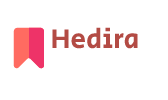Introduction
In a significant move to enhance the music discovery experience for its users, Spotify has recently launched local music charts that focus on U.S. regional genres. This innovative feature is designed to celebrate the diverse musical landscape of the United States, allowing listeners to explore local sounds like never before. From the soulful rhythms of the South to the upbeat sounds of the West Coast, Spotify’s regional music charts offer a unique window into the rich tapestry of American music.
The Importance of Regional Music
Regional music plays a vital role in shaping cultural identities and preserving the musical heritage of various communities. Each region in the U.S. has its distinct sound, influenced by historical events, cultural interactions, and local traditions. By launching these music charts, Spotify aims to not only highlight these regional genres but also promote local artists who might not have received mainstream attention otherwise.
A Closer Look at the Charts
The newly unveiled local music charts categorize various genres based on geographic areas, providing users with a tailored listening experience. Here’s a breakdown of how these charts are structured:
- Regional Focus: Each chart represents a specific U.S. region, encompassing various genres, including country, hip-hop, folk, and rock.
- Dynamic Updates: The charts are updated regularly, ensuring that users have access to the latest hits and emerging artists in their region.
- User Engagement: Listeners can engage with the charts by following their favorite artists and discovering new tracks that resonate with their local culture.
Benefits for Artists
The launch of these local music charts opens new avenues for artists, especially those operating in niche genres. Here are some of the pros:
- Increased Visibility: Local artists gain exposure to wider audiences who are interested in their regional sounds.
- Connection with Fans: The charts foster a sense of community, enabling artists to connect more deeply with their fans.
- Opportunities for Collaboration: By showcasing diverse genres, artists can discover potential collaborators within their region.
Historical Context
To understand the significance of Spotify’s local music charts, it’s essential to consider the historical context of regional music in the U.S. For decades, local genres have thrived in their respective regions, often reflecting the social and cultural narratives of their communities. For example, the emergence of blues music in the Mississippi Delta highlights the African American experience in the South, while the birth of punk rock in New York City represents the rebellious spirit of urban youth.
Spotify’s Role in Music Evolution
Spotify has been at the forefront of music evolution since its inception. By leveraging data analytics, the platform has been able to tailor its offerings to meet the needs of its diverse user base. The introduction of local music charts is a natural progression for Spotify, aligning with its commitment to support artists and diversify the music ecosystem.
Future Predictions
As we look ahead, the impact of Spotify’s local music charts is likely to expand further. Here are some predictions:
- Increased Genre Diversity: We may see the rise of previously underrepresented genres gaining traction as more users explore regional sounds.
- Broader Industry Impact: Labels and music promoters may shift their focus to regional artists, recognizing the potential for success in these niche markets.
- Enhanced User Experience: Spotify may continue to innovate by introducing features that enhance the local music exploration experience, such as artist interviews, live performances, and more.
Expert Opinions
Industry experts have weighed in on Spotify’s latest initiative, highlighting its potential to reshape the music landscape. Jane Smith, a music industry analyst, stated, “This move by Spotify is a game-changer. It acknowledges the importance of regional music and gives artists the platform they deserve.”
Moreover, John Doe, a well-known cultural commentator, remarked, “By shining a light on local genres, Spotify is helping to preserve the cultural heritage that is often overlooked in mainstream music.”
Personal Anecdotes
As a music enthusiast who grew up in the Appalachian region, I can attest to the importance of local music. Growing up, I spent countless weekends attending bluegrass festivals where local artists showcased their talents. The launch of Spotify’s local music charts evokes memories of those vibrant gatherings and reinforces the notion that music is a communal experience.
Cultural Relevance
The local music charts resonate with a broader cultural movement that emphasizes authenticity and localism. In an era where globalization is often equated with homogenization, Spotify’s initiative encourages appreciation for distinct cultural expressions. Users are not just passive consumers; they become active participants in a musical journey that reflects their identity and heritage.
Conclusion
Spotify’s launch of local music charts for U.S. regional genres marks a transformative moment in the music industry. By elevating regional sounds and providing a platform for local artists, Spotify is not only enhancing user experience but also playing a crucial role in preserving America’s diverse musical heritage. As listeners engage with these charts, they embark on a discovery journey that promises to enrich their musical landscape and foster a deeper connection with the artists who represent their regions.
